“#Two Against #One” ~ @DebraUlrich @RecoveryRelief #cloud, #music #video #photo @youtube.

by @DebraUlrich
#Home On The Range http://t.co/QuJzaWS http://t.co/m5Y1omb @RecoveryRelief #in #b2b #b2c #EAv #cloud #music #video
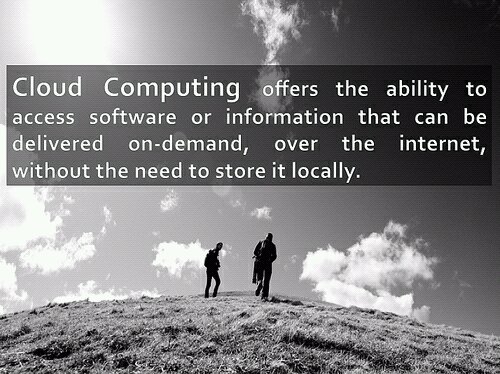
by @DebraUlrich
Does The Future Of The Internet Have Room For Web Designers? http://bit.ly/abqeUj #RecoveryRelief
Does The Future Of The Internet Have Room For Web Designers?
It seems that new posts about what the Internet has in store for us down the road pop up every week or two. Some propose that the Internet will deliver more of the same, but different somehow (it’s usually ambiguous just how), while others propose such radical changes that it’s hard to believe they could ever happen. And the truth is, none of us really know what will happen with the Internet in 10 or 15 years.
After all, it was only a little more than 15 years ago that Clifford Stoll wrote the now-infamous “The Internet? Bah!” post (subtitled: “Hype Alert, Why Cyberspace Isn’t, and Will Never Be, Nirvana”). In that post he detailed why a lot of things just wouldn’t happen online but most of which are now commonplace.
As web designers and developers, what the future holds for the Internet is imperative for our livelihoods. If the Internet has radical changes in store for us, we need to understand how they might effect what we do to earn a living and what we’ll need to do to adapt and keep pace — if that’s even possible.
[Offtopic: by the way, did you know that we are publishing a Smashing eBook Series? The brand new eBook #3 is Mastering Photoshop For Web Design, written by our Photoshop-expert Thomas Giannattasio.]
The Future is Content and Data
Look at your mobile phone. If you’re like most tech-savvy consumers, you’ve likely got a smartphone of the Apple or Android variety (or maybe a Blackberry, especially if you’re working in the corporate world). Most of us use our smartphones on a near-constant basis doing everything from checking email to working on projects to entertaining ourselves. How much of all that do you do in your phone’s browser?
The answer is probably “not much”.
We use an app to check email. We use the Facebook app for status updates. We use Twidroid or TweetDeck or the official Twitter app for tweeting. We use a YouTube app to watch videos. We use the Pandora or Last.fm apps for streaming music.

Mozilla Prism is an application that lets users split web applications out of their browser and run them directly on their desktop. Is this the future of mobile applications?
It’s likely a similar scenario on our desktop or laptop computer. We use apps for a lot of our common Internet-based activities. We even have options to create our own apps with single-site browsers (likeFluid or Prism). And Google’s Chrome OS is just around the corner with devices already planned to use the web-based OS.
Content is king and design is becoming less relevant – we’re already seeing this with mobile themes
Look at how many WordPress sites use one of less than a handful of standard mobile themes. It doesn’t matter what the site looks like in a standard browser; open it up in your mobile browser and you’re often greeted with a page that looks exactly like the last 10 sites you visited.
This is because for most web users, design is irrelevant<. That’s not to say they don’t appreciate good design. Many of them do (and many of them don’t). But they’re on a website because of the content. As long as the design doesn’t give them a headache or interfere with their ability to find what they want, they don’t really care what it looks like. The most widely-used mobile themes offer the content in an optimized format for mobile viewing. That makes users happy.
It is not just apps that reduce the need to visit a website
It’s not just apps that will pull data directly, without the need for an actual website. Devices are making real headway in this manner. We have cars now that can pull information from the Internet for you. Soon devices for Google TV will be out in the marketplace, pulling video content from the Internet without the need to visit a website.

Soon devices for Google TV will be out in the marketplace, pulling video content from the Internet without the need to visit a website.
It’s likely that more devices will add Internet integration in the near future. At some point we’ll probably have refrigerators that automatically generate shopping lists for us (including any available coupons and where the best prices can be found that week): based on previous shopping habits; what we currently have; and our average usage rates for different foods. This is just one example of how online data and content will become infinitely more important than the designs surrounding that content.
Content Will Be Funneled Through a Handful of Sources
It’s impractical to have apps for every website we visit. Most of us visit hundreds or thousands of websites every year. What’s more likely to happen is that most of our content will be delivered through aggregators.
Who will these aggregators be?
Currently, there are three big players on the Internet that are likely to continue to be the primary content delivery platforms. Who are they? Twitter, Facebook and Google. Think about where you spend most of your time online and you’re likely going to find that those are the sites you visit most often. This market share is only going to increase.
Facebook is already trying to be the Internet
Look at how much content is now aggregated through Facebook. They have pages for virtually every topic under the sun (most of which have canned content taken directly from Wikipedia). Post a YouTube video to Facebook and your friends can watch it right there, without ever leaving Facebook. Even third-party applications like Networked Blogs stick pretty closely to the Facebook environment.

Post a YouTube video to Facebook and your friends can watch it right there, without ever leaving Facebook. Even third-party applications like Networked Blogs stick pretty closely to the Facebook environment.
Besides that, look at the gaming environment that’s cropped up on Facebook. I’ve lost track of how many updates in my news feed are directly related to games like Farmville or Mafia Wars. Facebook has grown into such a complete online ecosystem that many users might never find a reason to leave. Facebook shows no signs of slowing down either. They’re expanding their business and their reach – a trend that’s likely to continue for as long as they can sustain it.
Google wants everything to go through them
Google already has its hands in virtually everything online. It has two operating systems (Chrome OS and Android), its own browser, web applications that allow you to do a lot of things that used to be limited to desktop applications and the most-used search engine in the world put it in a pretty solid position to continue to be a major stakeholder in the future Internet.
Google is also one of the more forward thinking and active participants in Internet policy and technology. It has a vested interest in how the Internet shapes up in coming years and will push to shape that Internet in a way that benefits its business model. I can see a future where Google doesn’t just offer a list of search engine results, but actually shows you the content you’re looking for without ever leaving their sites.
If you look at Google’s complete product offering, it’s easy to see that it wants to be the primary online destination for most people (or maybe even all people). Google is firmly positioned in blogging, video, search, business applications, webmaster tools, ecommerce and even phone services – expect its reach to expand even more.
Is there room for other services?
There are always going to be innovative startups online. Most will fall by the wayside soon after they’re started or are absorbed into other established companies. A select few will go on to become major influencers online. It’s unclear at the moment where there’s room for new companies and services online. The idea of more location-based services (going beyond FourSquare, et al) is probably the most promising as well as services that go beyond normal Internet activities and integrate into daily life more.
Function Will Prevail over Form
If everyone is accessing web content through an app rather than a browser, then no one will care what a website looks like. The way it functions and the content it delivers will become the paramount concerns to users. There will be no more balancing of form and function on a website; function will override form.
Form will retain a place in the design of apps. In all likelihood, content will be open to the extent that APIs will be developed that anyone can then use in application development – so the form in which an app displays that data will become what separates the good from the bad, the great from the mediocre.
There are Advantages…
There are some big advantages to this kind of model where apps and a small number of content aggregators deliver and control most of the content online. One issue is bandwidth. If there’s no design being transferred to a device (because the application on the device already includes all the design elements), that saves bandwidth. As more and more activities are done online, we’re going to have to consider infrastructure costs. Lower bandwidth use per site will result in more bandwidth available.
Another advantage is that there’s more potential for user control. Users can define their preferences on their device and see content in the way they want. This especially has positive implications when it comes to accessibility. Those who need special settings because of a disability will no longer have issues with unviewable content.
Technical advantages
Let’s face it: the technologies upon which the Internet is built aren’t the most efficient ones available. Part of this has to do with building upon infrastructure that isn’t as good as it could be. The Internet has to be backwards-compatible over very long periods of time. We can’t just suddenly change things, even if it is to make things work better in the future, if it causes half the sites out there to no longer function.
With a content-based Internet that uses device-side applications for displaying data and performing tasks, we can create more efficient applications. We won’t need to make sure each application can handle a huge variety of content and processes (as browsers currently have to do), because we’ll know exactly the kinds of data that application will need to process.
What Does It Mean for Users?
Practically, users will have a more integrated experience with the content they view and the services they use online. The Internet will become even more a part of everyday life, incorporated to such an extent that it’s seamless. It’s already happening in bits and pieces.
Again, look at your phone. You probably use apps or widgets for things like checking the weather or generating a shopping list. These apps will become more integrated and will work better with the data available online. For example, you could use that shopping list to automatically find the best prices on products, either online or at your local stores. In all likelihood, that data would be aggregated through a service like Google Base.
One profile fits all
An online profile will become even more important for users. Rather than setting up every device or service you have, you’ll simply authorize the device to grab your profile and preference information from the web. Security and privacy experts will have a field day with this, but most consumers will opt to use it anyway if it means the difference between going through a two-hour manual setup process or clicking a button and authorizing it to set everything up automatically.
What Does It Mean for the Web Design Industry?
So what does this all boil down to? If the web becomes app-based and content-based, where do web designers fit in — if at all? The bad news is that if the Internet starts relying much more heavily on access via app rather than browser, there’s going to be a lot less demand for web designers. Companies won’t see the point in hiring someone to create an entirely bespoke website when they can just use a template and then feed all their content to Google and Facebook and Twitter.
Developers, on the other hand, will likely see a boom in business. A lot of money will be exchanging hands for apps that work better than current offerings and apps that might be able to undermine the big players. Of course, all these apps also need design work, but it will be a lot less demand than there is now for website design. It’s likely a lot of designers will need to expand their offerings to cater to content creation rather than just web design.
Websites aren’t going to go away any time soon. It’s likely that there will be a bigger market for templates and themes as companies stop paying for custom designs. And there will be certain kinds of sites (like portfolios or art projects) that will always want to be designed.
Multimedia content will also still have a strong market. Those who can produce high-quality videos and even web-based apps (for things like Chrome OS) will have a strong business for years to come.
Who Wins in All This?
If there’s a definite winner in this possible future Internet, it is the content creators. If the only thing that sets one company or organization apart from their competition, then those who can create high-quality content will be in high demand. The thousands of dollars that a company used to be spent on website design will be funneled into website content instead.
Users will also benefit as they’ll have a more integrated, customized experience. Their version of the Internet will be tailored specifically to them, based on their own wants and needs. They’ll get content in the manner they prefer and find most usable.
Application developers will also likely win in all this. While the APIs and the data available will be pretty standardized, the manner in which it’s displayed will become a battleground of creativity. Innovation here will be key, doing something different and better than what everyone else is doing is the only way an app will stand out.
(afb)
What Is Social Networking? http://trim.li/nk/3Gao @RecoveryRelief #amplify #recoveryrelief #socialmedia
Social networks can provide a range of benefits to members of an organization:
Support for learning: Social networks can enhance informal learning and support social connections within groups of learners and with those involved in the support of learning.
Support for members of an organization: Social networks can potentially be used my all members of an organization, and not just those involved in working with students. Social networks can help the development of communities of practice.
Engaging with others: Passive use of social networks can provide valuable business intelligence and feedback on institutional services (although this may give rise to ethical concerns).
Ease of access to information and applications: The ease of use of many social networking services can provide benefits to users by simplifying access to other tools and applications. The Facebook Platform provides an example of how a social networking service can be used as an environment for other tools.
Common interface: A possible benefit of social networks may be the common interface which spans work / social boundaries. Since such services are often used in a personal capacity the interface and the way the service works may be familiar, thus minimizing training and support needed to exploit the services in a professional context. This can, however, also be a barrier to those who wish to have strict boundaries between work and social activities.
- <a rel="nofollow" href="http://twitter.com/home?status=What+Is+Social+Networking%3F++-+File: /data/app/webapp/functions.php
Line: 7
Message: Too many connections&source=shareaholic” title=”Tweet This!”>- <a rel="nofollow" href="http://identi.ca//index.php?action=newnotice&status_textarea=Reading:+"What+Is+Social+Networking%3F+"+-+from+File: /data/app/webapp/functions.php
Line: 7
Message: Too many connections” title=”Post this to Identica”>
New Design For The Dollar Bill (PHOTOS) #Amplify #RecoveryRelief
Though submissions are no longer being accepted for this particular competition, people can vote still for their favorite design by visiting the Dollar ReDe$ign Project at http://richardsmith.posterous.com/. However, voting does end on September 30th, 2010.
As of right now, a British duo, “Dowling Duncan,” is in the lead for their brightly colored and original vertical designs (see main picture).
UNITED STATES—According to the Dollar ReDe$ign Project’s official website, their US currency design contest was created with “hopes to bring about change for everyone.”
“We want to rebrand the US Dollar, rebuild financial confidence and revive our failing economy.”
Masterminded by a creative strategy consultant named Richard Smith, The Dollar ReDe$ign Project has received a myriad of unique and original design submission from all over the world, which have ranged widely in content, subject, and overall form.
According to a statement Smith gave on Fox News, the submission-styled project was created as a way to “find a catalyst to restart our economy.”
Smith added that, “This has touched people’s hearts…people feel the dollar touches their lives.”
Luke Short
iSurf News
Information provided by the Huffington Post and the Dollar ReDe$ign Project
And The Ultimate Game Changer Is Going To Be…? @DebraUlruch @RecoveryRelief
I am delighted to announce HuffPost’s 2010 Game Changers — 100 innovators, mavericks, visionaries, and leaders who are changing the way we look at the world and the way we live in it. Innovation has always been part of HuffPost’s DNA. So we’re pleased to recognize those who are pushing the envelope. Our Game Changers operate in multiple worlds but, whatever the arena, they share a common trait: a willingness to look at things and take the risk of saying, “I think I have a better way.” To salute these Game Changers, we’ve put together slideshows giving you the lowdown on who we picked, why we picked them, and how they are changing the game. But that’s just the beginning: now it’s up to you to vote for the Ultimate Game Changer in each category. Click here to find out more about who we picked and how to cast your vote.
“I’d like to write #love letters to #God in a #cloud each day!” ~@DebraUlrich #quote
 7 TISHREI
#time/#date
Dear Ha’Shem,
HAPPY NEW YEAR!
7 TISHREI
#time/#date
Dear Ha’Shem,
HAPPY NEW YEAR!






























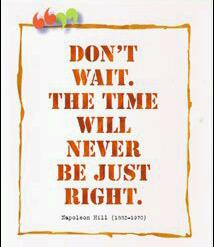

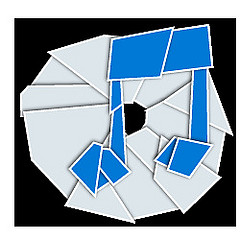
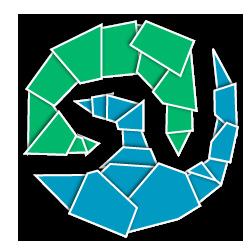

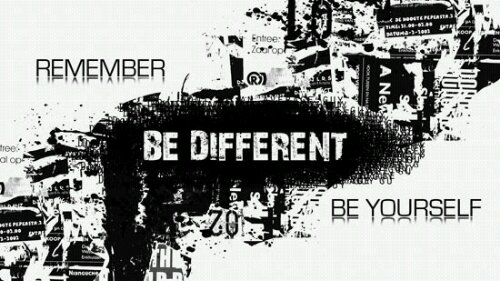





You must be logged in to post a comment.